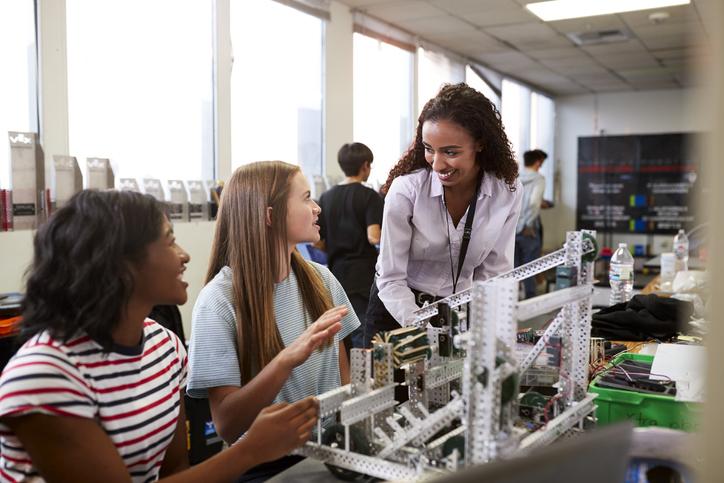One of the goals of online learning collaborations is to expose students to real-world challenges they will face as citizens and professionals. This can not only build skills, but allow them to make an impact on their local community and broader society. But for these collaborations to be successful, we must choose the right partners and ensure objectives are aligned.
In this resource, we use two case studies to illustrate how to build meaningful learning experiences with external partners. We draw our guidance from:
• A course on the cultural heritage of Mexico, in partnership with LABNL, a culture, innovation and citizen development laboratory
• A course on ethics, sustainability and social responsibility, in partnership with the United Nations Information Center (UNIC) for Mexico, Cuba and the Dominican Republic.
What makes a great partner? Aligning expectations
Before partnering with a collaborator, consider the following:
• Do the organisation’s interests align with issues your course addresses?
• Are they genuinely interested in contributing to students’ learning from a professional and specialised standpoint?
• Are they open about what they hope to gain from the collaboration?
• What level of involvement do you expect, and can they meet this?
• Are they open to digital collaboration (synchronous/asynchronous engagement, remote feedback, the use of digital platforms as the primary site of learning)?
For our cultural heritage course, we partnered with an organisation that shared our goal of preserving intangible heritage and was eager to promote the importance of recognising the culture that surrounds us. For our ethics, sustainability and social responsibility course, we selected a partner that shared the same interest in encouraging climate action.
At the outset, we asked each potential partner about their motivations and capacity. We prioritised those whose goals aligned and who were open to asynchronous learning.
Once you identify your partner, discuss needs, expectations and logistics. Consider:
• What are the partner’s objectives for the collaboration, and do they align with your course’s aims?
• What kind of product, impact or deliverable is expected on both ends? Ensure that the learning experience benefits everyone involved
• Will students and partners engage synchronously or asynchronously?
• In what capacity will the partner be involved? Will they help design the course, offer mentoring and feedback or take on other roles?
• If partners agree to give students feedback, when, and how?
• Will students’ work be showcased or shared, and on which platforms?
• What technologies can you use to support communication, collaboration and content creation, and how can these tools enhance the learning experience for all participants?
For our partnership with LABNL, we defined objectives and designed a worksheet for the students. LABNL then created a video explaining the purpose of the exercise, its cultural significance and a step-by-step guide to completing the activities. We used Padlet as a shared digital space for communication and collaboration.
For our collaboration with UNIC, students were tasked with creating an awareness campaign around plastic pollution. Through brief synchronous sessions and meaningful digital interaction with UNIC representatives, our students learned how to adapt science-based messages to social contexts.
Asking the above questions helped us clarify mutual expectations so the collaboration remained logistically viable and meaningful.
- Spotlight guide: The evolution of authentic assessment
- Portfolio assessment may be the key to deeper learning
- Partnering with industry for authentic experiences and assessment
Pedagogies that encourage real-world learning
Choosing the most appropriate pedagogical approach is key. We suggest considering experiential and authentic learning.
Experiential learning prompts students to “learn by doing” by simulating professional processes and reflecting on the experience. It allows them to gain skills and perspectives through active, hands-on experience. We used experiential learning principles in our cultural heritage course, which required students to document cultural practices using audiovisual tools, research protocols and digital platforms. The aim was to offer them an insight into the roles of LABNL employees and other cultural heritage professionals.
Experiential learning opportunities are everywhere. They could involve solving a real problem for a local non-profit, role-playing a work scenario, doing fieldwork or responding to a social issue as part of an interdisciplinary team. And sometimes experiential learning can go beyond simulation into the real world. At Auburn University in the US, for example, architecture students build homes for real families in rural Alabama. They face real constraints, such as budgets, materials, even weather. For this kind of partnership to work, you need to involve external collaborators early on, define expectations, clarify roles and keep communication open. When that happens, the learning moves out of the abstract to the concrete and students remember it because they lived it and have seen the very real impact of their work.
Authentic learning happens when students engage with tasks that are grounded in the real world – or at least prepare them to act meaningfully within it. In our sustainability course, for example, the public awareness campaigns on plastic pollution gave students a chance to turn scientific ideas into messages aimed at a broader audience. UNIC supported the process through delivering short live sessions and asynchronous feedback, helping students refine their work. In the end, the top campaigns were shown on screens in Mexico City’s metro. Thousands saw their work. It wasn’t just a class project – it was a call to action to society.
To succeed, partnerships must align goals and needs, pedagogical approaches and technology thoughtfully. When these elements come together, educators can create learning experiences that allow students to contribute meaningfully to society.
Bárbara Regina Granados Guzmán is a professor in the department of educational innovation and digital learning, and Luis Gerardo Rojas Solorio is an associate professor of ethics, sustainability and social responsibility, both at Tecnológico de Monterrey, Mexico.
If you’d like advice and insight from academics and university staff delivered direct to your inbox each week, sign up for the Campus newsletter.




comment